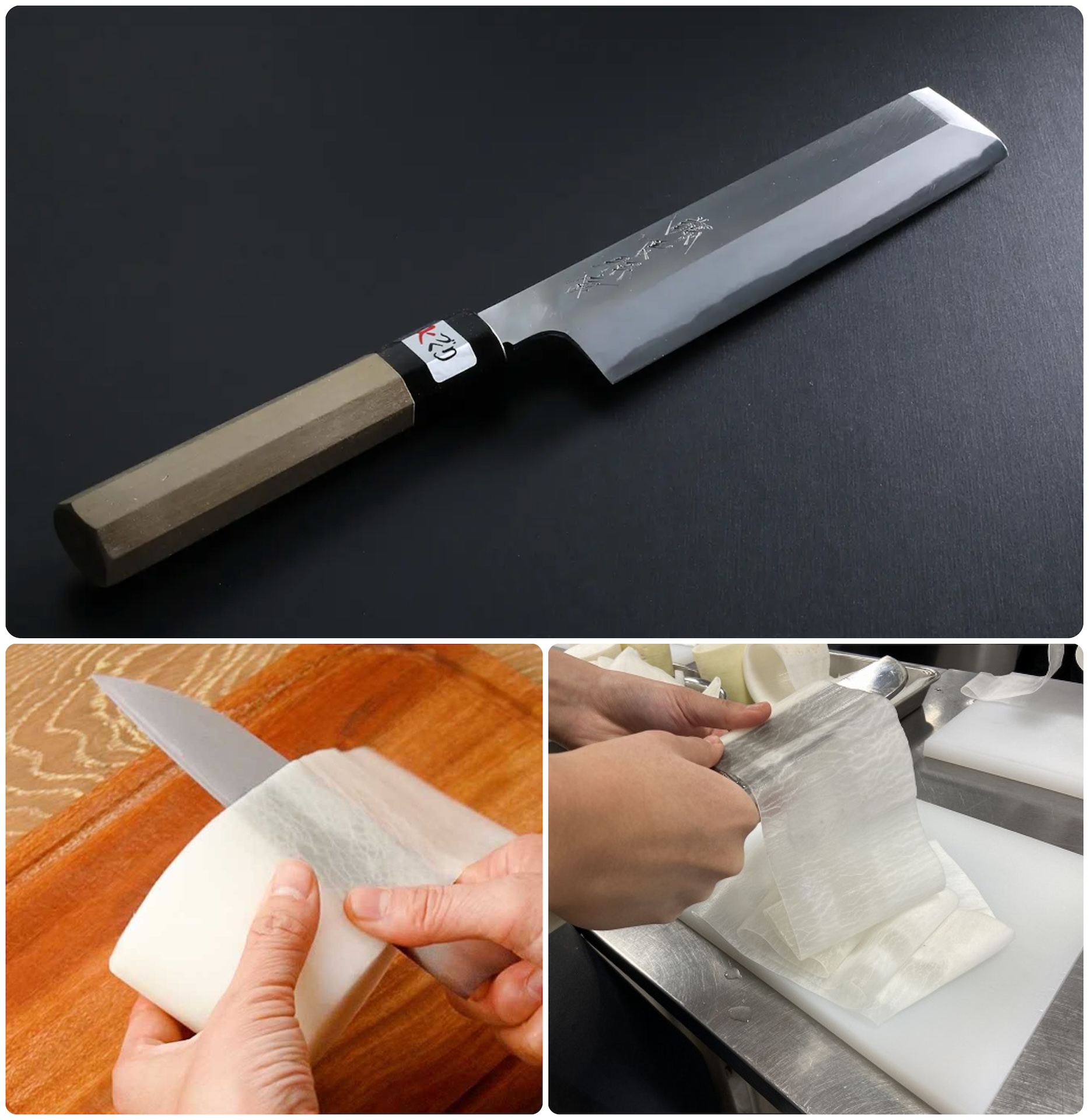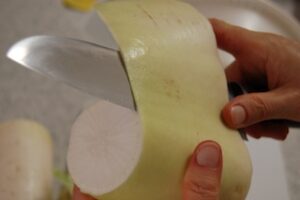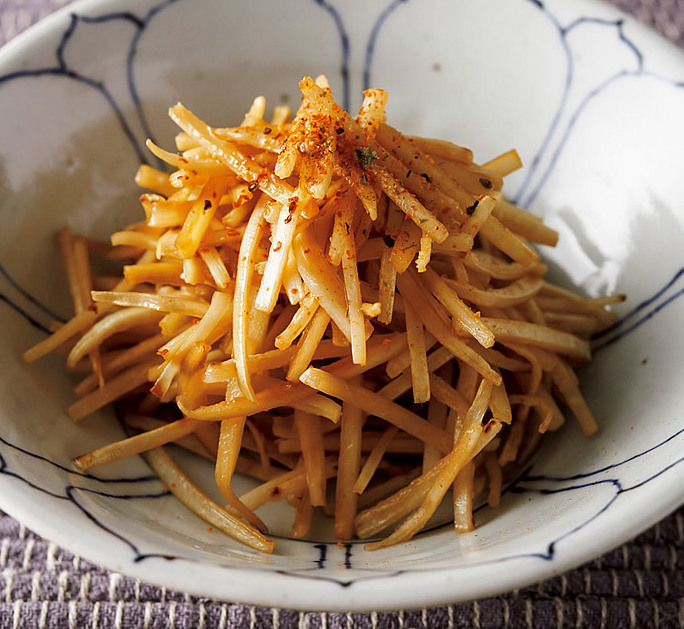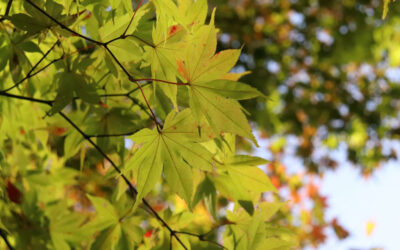
KATSURA MUKI
Daikon radish is peeled into long, seemingly impossibly thin ribbons in a cut known as katsura muki. The skill needed to produce these peels is the most basic requirement in any Japanese professional kitchen. It typically takes months (if not years) of daily practice to master the technique.
Want to give it a go? Check out PROJECT katsura muki for a basic tutorial.
As you practice, you’ll have lots of peels and peeled chunks of daikon. Below are some ways to enjoy them.
Kimpira
Kimpira stir-fry 金平
Kimpira is a slightly sweet, tingly-hot stir-fry — a fiery blend of seven spices called shichimi tōgarashi is always added at the end of cooking.
Making kimpira from daikon peels is perfect! Use the peels from your katsura muki practice sessions.

Piping Hot Daikon with Yuzu Miso
風呂吹き大根 Furofuki Daikon
Tender-prepped and then simmered in dashi broth and serve piping hot – so hot you will need to blow away the steam (that’s the origin of the dish’s name) the daikon is then served with a miso sauce — yuzu miso is my favorite.
After practicing your katura muki cutting technique you’ll have lots of chunks of peeled daikon. This is one just one of many delicious ways to prepare peeled daikon chunks.
Download a copy of my November 2025 newsletter about KATSURA MUKI peeling.






